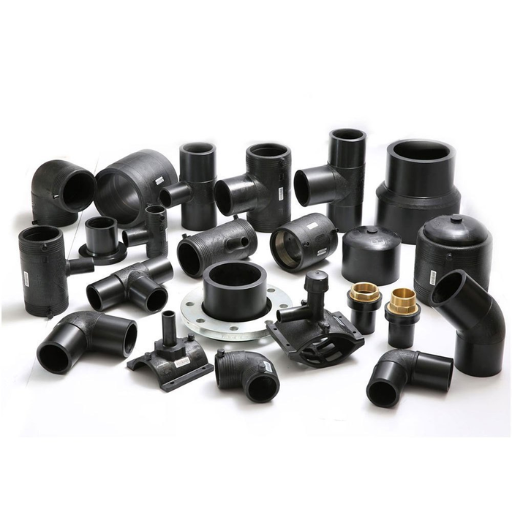In today’s plumbing, high-density polyethylene (HDPE) pipe fittings have become one of the most frequently used fittings due to their rigidity and high resistance against corrosion. Also, as the water pipe fittings utility increases, realistic knowledge of HDPE fittings and their application should be apparent to engineers, contractors, and homeowners. The next sections aim to elaborate on types of HDPE fittings, their uses, and their advantages over other conventional fittings. This paper presents information on the focus areas and implementation of HDPE water pipes so that readers are prepared with the necessary information to decide on the correlation between the use of the fittings and the performance expected out of them and their longevity. This document would be of counsel to readers seeking to apply the fittings either in domestic installation or in larger commercial construction.
What are HDPE Pipe Fittings?
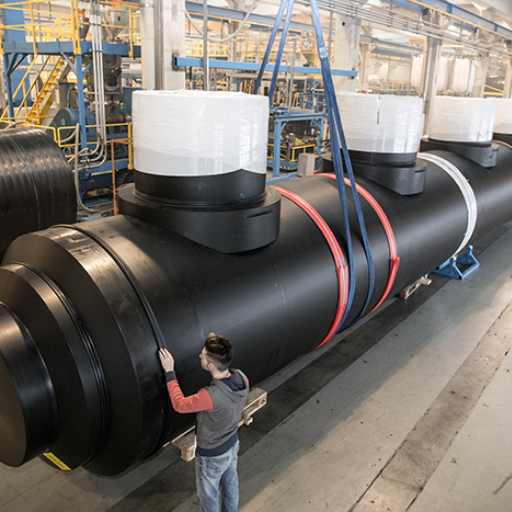
In today’s plumbing, high-density polyethylene (HDPE) pipe fittings have become one of the most frequently used fittings due to their rigidity and high resistance against corrosion. Also, as the water pipe fittings utility increases, realistic knowledge of HDPE fittings and their application should be apparent to engineers, contractors, and homeowners. The next sections aim to elaborate on types of HDPE fittings, their uses, and their advantages over other conventional fittings. This paper presents information on the focus areas and implementation of HDPE water pipes so that readers are prepared with the necessary information to decide on the correlation between the use of the fittings and the performance expected out of them and their longevity. This document would be of counsel to readers seeking to apply the fittings either in domestic installation or in larger commercial construction.
Understanding the Basics of Polyethylene
The comprehensive review of the properties and characteristics of polyethylene outlined in the previous sections is vital for appreciating the application of this material in piping systems. This can be explained by the fact that polyethylene is a durable polymer that has a very high strength-to-weight ratio and offers a great deal of flexibility. Being a thermoplastic, it cannot only be made in different shapes and designs, which makes it very effective in providing strong and reliable piping systems. My experience has also shown me the inherent usefulness of this material, from its resistance to many chemical substances and stress-cracking to its ability to cope with many harsh conditions. Besides, the low weight and simple installation of HDPE systems usually imply less need for labor and shorter building time. Hence, understanding the correct properties can help improve the design of water transportation networks and help decision-making for all employees who are working with HDPE pipe systems.Key Types of HDPE Fittings
Key Types of HDPE Fittings
My experience prompts me to categorize HDPE fittings into three prominent subtypes, which are butt fusion, electrofusion, and flanged joints, all of which perform similar functions but in a very distinct manner. Butt Fusion fittings entail the joining together of pipe sections through the application of heat, which serves to render the joint and the adjoining space fusion strong and impermeable. It’s worth noting that the heat fusion method is quite effective and is commonly employed in projects where strong and uncomplicated connections are needed.
Electrofusion is a more particular method of joining elbow fittings that uses fusion devices that have wire coils embedded in them; this means that the wires resist, and this causes friction, which in turn causes heat, the joint which is subject to heat, will then be melted and softened enabling a connection to be made whereby the pipe is under internal pressure. The relevance of this type of work highlights the aspects of the job that require tight tolerances and provides options for working in cramped conditions.
The last type of fusion fitments that i will discuss is flanged joints which have bolted flanges on pipes or valves which are used to form the mechanical assembly that can be inserted into other equipment, which allows the system to be disassembled and reassembled whenever necessary. So as to focus on specific details about a project, it becomes essential to understand that all the types of fittings do enhance the general structure of the project in their own different ways. A number of studies carried out in the past indicate that the effects of such fittings when thoroughly applied and executed, may prolong the life expectancy of the system and decrease the amount of maintenance that is required.
Advantages of Using HDPE Pipe Systems
Whether it’s pressures that are immense or the movement of chemically hazardous liquids, I have seen how HDPE pipe systems can perform a relentless job in multiplying effectiveness. Here’s a detailed breakdown of these advancements:
Durability and Strength: HDPE pipes are extremely durable and appear to last long. They have a high tolerance to wear and tear, physical or chemical, allowing them to integrate well in several types of environments.Flexibility: Since HDPE pipes are somewhat flexible to begin with, it is able to sustain pressure spikes, which is ideal for areas where there is considerable change in the environment or temperature.
Corrosion Resistance: Plastic resin pipes are such that they do not rust as metals do and, therefore, do not deteriorate with age. This resistance to chemical reactions helps them last longer and requires low plains.
Ease of Installation: HDPE pipes are lightweight, therefore, are easier in handling and installation which sometimes costs less man hours because of the labor used, this helps greatly in reducing project cost.
Leak-Free Joints: Joints which are rather prone to leakage are almost nonexistent in HDPE systems due to the fusion that occurs, as a consequence, performance and efficiency of the system as a whole improves.
Environmental and Economic Efficiency: Due to the fact that they are recyclable and have lower energy demand across the span of their usage, they are good for both the environment and the economy.
Each of these parameters, when taken together, indicates why it is becoming more common to use HDPE pipe systems in both household and commercial water, including sewerage systems.
How to Choose the Right HDPE Fitting for Your Project?
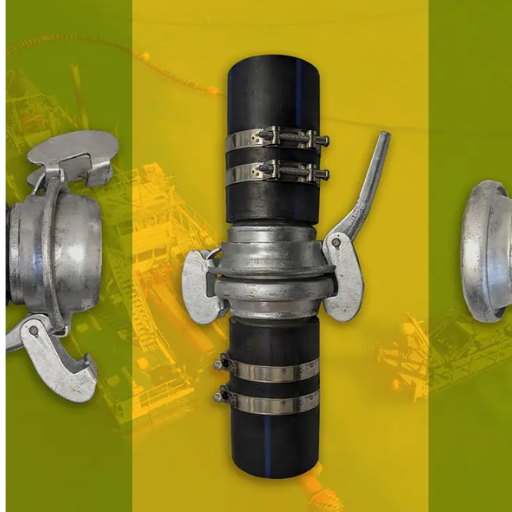
when it comes to finding the right HDPE fitting, you need to start by concentrating on the specifics of your project. Once again, consider the environmental factors that may change the conditions surrounding the fuse, such as temperature or pressure, as they will greatly determine the fitting. One template factors the application type, whether it is short-term use or permanent, requirements of flexible connection, or rigidity. For strong and everlasting links that have no requirements for joints and couplings, cut or electrofusion is best, depending on how tight the space is. For applications that need to be replaced or disassembled many times, flanged joints are the best. In addition, there is a need to ensure compatibility with current systems and industry regulations for system functioning. If these factors are taken into consideration, then the appropriate HDPE fitting can be chosen for the specific functional requirements of the project.
Considering Pipe Diameter and Pressure
A variety of parameters have to be taken into account when designing an HDPE system. For an industry professional, the ability to select the appropriate pipe diameter and pressure level remains essential. These are the parameters:
- Flow Rate Requirements: The dimensions of the pipe need to be appropriate for the capacity of the fluid which needs to be carried.`If the fluid flow rate is high, a bigger diameter will suffice in decreasing the amount of friction that is created and maintained.
- System Pressure Conditions: Ascertain the working pressure that your system will handle at most. HDPE pipes are available in various grades, hence choosing a pipe with the capability to withstand the designed pressure is extremely critical.
- Length of the Pipe Run: Add all the lengths of the pipes to be used when joining together.`If going by longer pipe systems, large diameter may be required to compensate for the drop-in pressure and achieve desired flow rate in different points of the system.
- Environmental Conditions: Consider any external forces acting on the pipe performance like cold winds and any chances of earth shaking. These can lead to a modification in the diameter and material required to withstand certain conditions.
- Safety Margins: For affected pressures and diameters, use the design margin calculation to determine the abnormal demand pressure that will ensure the new confining stress holds.
Considering these factors will help you to make certain that not only your HDPE piping system is efficient but also all the specifications hold good for meeting the anticipated requirements of the project.
Importance of Corrosion Resistance
Corrosion resistance is one of the most important attributes of piping systems to ensure their serviceability and durability; these are the words of an industry expert. Indeed, metal pipes are at risk of corrosion damage as time goes on, which can ultimately cause leaks, system malfunction, or the need to initiate expensive repairs. On the other hand, HDPE pipes naturally have a degree of protection against most of the corrosive substances that they are likely to come into contact with while buried or submerged. Such resistance of pipes makes the use of protective coatings or the application of cathodic protection systems unnecessary, thus reducing maintenance and repair costs and increasing the availability of the assets. Further, since HDPE by itself will not react with many chemicals, it will provide a high level of protection for systems transporting considered water as well as industrial fluids. The material’s good resistance to corrosion greatly enhances infrastructure survivability and service life prolongation, defining HDPE as an optimal material for constructing piping systems in modern engineering.
Applications in Water Supply & Irrigation
I keep getting asked questions about the specific uses of HDPE pipes in water service and irrigation systems. To make this simple, I will put it\nin a non-technical language addressing only the parameters that support their applications:
- Durability: An important characteristic of an HDPE pipe is that it is highly durable and therefore, the financial resources are not drained in regular replacements after short spans. This feature is essential for irrigation systems that require regular, dependable performance over long durations.
- Flexibility: The versatility of the material is incomparable, enabling them to withstand varying geographical conditions without fracturing or snapping. This is useful in agricultural fields that are on sloping plains that would have otherwise been a challenge.
- Corrosion Resistance: The use of high-density polyethylene in potable water supply applications greatly limits the leaching of harmful contaminants. It increases the durability of the pipe systems due to no deterioration due to rust or corrosion chemical reactions.
- Easy Installation: Since HDPE pipes are lightweight and easy to connect, this minimizes the amount of labor required and time taken in the installation process. This is brilliant for both large-scale irrigation schemes and municipal water supply systems.
- Leak-Free Joints: This method also has the added advantage of creating impervious joints thus through which HDPE pipes have leak-free joints when attaching water delivery systems principles around it. This property of savings is also important in water conservation and fueling potency for the system since it helps promote water savings.
- Environmental Compatibility:Due to the ease of recycling as well as low level of pollution borne by HDPE, its use in irrigation and water supply systems is environmentally friendly and supports international efforts towards green technologies.
It is apparent that HDPE pipes are often used in water supply and irrigation systems by evaluating these parameters. Such characteristics make them suitable for such use because they are strong, easy to use, and help to save water resources.
How to Install HDPE Pipe Fittings Correctly?
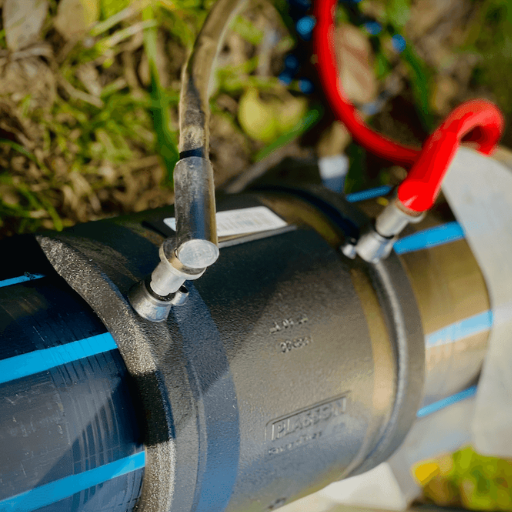
I have a clear commitment to upholding HDPE pipe fitting installers’ best practices. To commence, put off end preps where all ends are wipe clean with no any waste on them. This is then cut straight using a suitable pipe cutter, in this case, to ensure it is straight. Perform an eye check to ensure the correct sized fittings that have the right configuration are used. For the majority of the usages, fusion welding is preferable as it forms joints that are free from leaks. Joint failure can happen if there is inconsistent heat throughout the fusion zone. Frosting the weld also requires time, but it should take place under conducive conditions so that the weld is strong. The above steps should be completed with caution as the final results may determine the reliability or durability of the work. Post installation of the system, the latter would be an ideal target, taking into consideration that many of these joints may be defective and unrepaired: a leak-testing site pressure test.
Step-by-Step Installation Guide
This is a sensible way to understand the actual seam welding of the HDPE pipe fittings and witness the cautious installation of the fittings. As a reliable source, let me explain how the process should be in brief steps using the knowledge and experience that I have:
- Preparation: To start, compile the needed tools and materials such as a pipe cutter, fusion welding equipment, and safety equipment. Be sure to clean the workshop in order to ensure that there are no such items that would result in interference during work.
- Pipe Cutting: A dependable pipe cutter should be used to make the pipe ends cut at an angle which does not exceed thirty degrees as a direct cut is natural and does not alter the pipes structural integrity to any significant extent. Always ensure that the end-cut surface is uniformly smooth as well in order to guarantee a perfect alignment.
- Cleaning: A dependable pipe cutter should be used to make the pipe ends cut at an angle which does not exceed thirty degrees as a direct cut is natural and does not alter the pipes structural integrity to any significant extent. Always ensure that the end-cut surface is uniformly smooth as well in order to guarantee a perfect alignment.
- Fitting Selection: Ensure that the fittings are correct for the purpose intended for use, for instance if the size is too large and fittings are misplaced, the joint can fail. Make sure you have gone through the component’s lay out and the appropriate size before commencing.
- Fusion Welding:For a completely airtight connection application of fusion welding should be used. Make use of a welder cooperatively with the welding machine’s engineering requirements in term of time and temperature in such a manner that the welded area will be heated at constant temperature in the required zone.
- Cooling: Allow the joint to cool in a controlled fashion. Do not skip this stage as it can result in weak joints which can alter performance significantly.
It is recommended to state specifically that a thorough visual inspection shall be carried out as a means of ensuring adequate alignment and bonding. Certainly, a pressure test is necessary before operation to ensure the integrity of the system and check for thus any possible leaks.
Common Mistakes During Installation
In spite of familiarization with the steps of installation, there are some shortcomings that one encounters and which tend to impair the efficiency of HDPE piping systems. Here, with regard to the mistakes noted during my work experience and time, are a few of them and their explanations so that one does not repeat them:
- Skipping the Cleaning Step: A common mistake that welders make is the failure to clean the pipe ends thoroughly before welding. Dirt and debris can cause blockage during the washing process resulting in failure of the weld joint or leaking over time.
- Inaccurate Cutting: Using tools that are cheap to buy but doesn’t offer a straight cut can affect the quality of the cut greatly. If the cut is not even even, then it will most probably result into deformation when fixed together which can be pressure sensitive.
- Incorrect Fitting Selection: When you try using fittings that do not suit the job you are trying to do precisely as in the size and the type required, it causes the built system to either work inefficiently or not work at all. Be sure to verify that you have the right components at hand before proceeding further.
- Inconsistent Heating: When doing the fusion welding, there is a critical importance of heating the elements to be welded consistently throughout otherwise there will be joints that will be weak. Unvarying temperatures can result in partial fusions, which in turn may lead to seeping of fluids.
- Rushing the Cooling Process: For the welds to manage to cool down which is quite critical when attempting to achieve optimal bonds, time has to be set aside. Skipping this step can weaken joints which diagnostic systems are unlikely to meet.
- Neglecting Pressure Testing: Not utilizing the pressure test can lead to major problems. This crucial step enables the user to ensure that the system is intact and inspect it for any critical points before making the complete operation.
You can secure your HDPE installations and ensure their safety and dependability by sufficiently understanding these frequent errors and solving them in advance.
Ensuring Proper Weld and Joint Integrity
In order to maintain the sound integrity of welds and joints in HDPE pipes, a number of parameters need to be focused on as I will outline in a simple way below:
- Surface Preparation: Firstly, grab a clean towel and wipe down all surfaces of the pipes and fittings, as any surface defect can compromise the welding strength. This ensures that the surfaces_ in contact are pure and that there are no external contaminants that can weaken the joint.
- Correct Alignment: Before performing the welding process, ensure to adjust all bolts, valves, pipes and flanges in their rigging positions. As all the components will be pointing and pulling in their correct positions, this guarantees strong and reliable anchoring to the joint.
- Welding Temperature: All temperature machinations recommended by the manufacturers should be strictly adhered to using a calibrated welding machine. Inconsistency within the temperature range, either too high or too low, not only hinders the strength of the joints but also causes free fusions.
- Pressure Application: While applying heat during the process of welding, ensure to constantly apply the pressure that has been recommended by the manufacturers. This not only allows the molten ends of the joints to bond but also helps to create a nice, smooth topography of the weld.
- Cooling Time: After the weld has been created, ensure to let the joints settle without any disturbance which can hamper the effectiveness of the location. This will help the joint to solidify in place while retaining maximum strength.
- Visual Inspection: After the weld has competitively cooled down, make sure to inspect the borders very carefully, as all seams are constant and perfect with no gaps or shifting whatsoever.
- Pressure Testing: After completing the installation of the system, it is crucial to examine the system as a whole for leakages and proper functioning by testing the pressure. This test consists of ensuring that there are no drops, to a certain level, after the injection of the required pressure to the system.
Incorporating control over every parameter allows for the achievement of strong welds and joint integrity of HDPE pipe installations, which will operate satisfactorily under a range of working conditions.
Exploring Different Types of HDPE Fittings
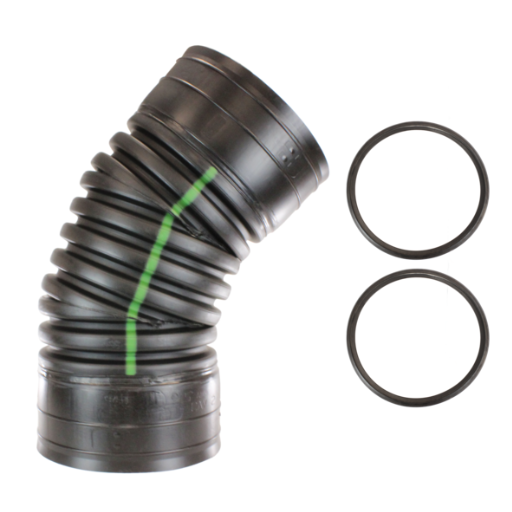
The acute type of fittings embedded into the design of high-density polyethylene piping systems proved useful in making such systems more efficient and dependable. Broadly speaking, the types include butt fusion fittings, electrofusion fittings, socket fusion fittings, and mechanical fittings, each designed in accordance with specific situational needs. The consideration butt fusion fitting allows to design strong, high-pressure pipes with simple butt weld joints. Butt fusion machines tend to be volumetric in design so as not to impact and permanently alter the compact design in spaces where there is limited room. The layout design employs electrofusion fittings, which can accommodate the popular pipe style for smaller diameters. Mechanical type guarantees easy and fast connections which makes them priorities in modular piping systems as well as for temporary arrangements. The life performance and efficiency of a given system depend on the type and number of fittings that have been selected for the design and construction of the system.
When to Use Reducer and Flange?
In Numerous Forums, I have been asked about the circumstances under which a reducer or a flange is to be used in HDPE piping systems. Here’s the answer as best as I can concisely and make it simpler for the reader:
- Reducer: Shrinkers are generally utilized when there is a need to alter the diameter of rotating sections in the piping system. This, in turn usually necessitates the following:
- Flow Requirements: A reducer is required in order to enlarge or reduce the flow of fluid for the intended operational parameters of the design.
- System Pressure Considerations: Reducing or increasing the sizes of the pipes aids in controlling the pressure of different areas of the system, thus enabling the system to function within the required conditions.
- Space Constraints: In some cases where space is small or limited in size, a reducer can help make the arrangement better without affecting the performance.
- Flange: Flanges are widely used for the joinder of pipes, valves, pumps and other accessories for the formation of a Piping System. They are convenient with regard to maintenance work. Here is why one would reference a flange:
- Ease of Disassembly: Flanges enable easy joining and separation of pipe sections which eases operational maintenance and examination.
- Alignment and Support: They provide alignment and support of enormous weight which is ideal for system components where tension is a major consideration.
- Compatibility with Other Components: Flanges are modular in nature, allowing integration with other piping elements, which is useful if the system has to be changed or modified at a later stage.
The requirements specified will permit you to make sound decisions about when reducers and flanges are required, resulting in the design of HDPE piping systems that are both functional and dependable.
Understanding Electrofusion and Butt Fusion Techniques
Being a specialist in the field, I can demystify the intricacies of butt fusion and electrofusion techniques while explaining the important parameters in their application.
- Electrofusion Technique:In order to join pipes and fittings, electrofusion involves the use of a special coupling that has embedded electrical resistance wires. Of particular concern are the following parameters:
- Fitting Selection: Use the appropriate type of electrofusion fitting with embedded coils that are designed to suit the size and application of the specific pipe.
- Cleanliness: The ends of the pipes and the fittings should be clean without contamination. This helps improve coupling and creation of strong joints.
- Alignment: The pipes and fittings should be aligned in order to avoid misalignment, which will cause leaks.
- Electrical Input: An electrofusion processor should be used to supply the required electrical output as indicated by the manufacturer to ensure the wires heat up and melt the pipe surfaces.
- Fusion Time and Cooling:Make sure to follow the prescribed fusion time so that a solid joint is established whilst allowing sufficient time for cooling under controlled conditions so that the weld becomes solid without causing stress on the joint.
- Butt Fusion Technique: The technique of butt fusion is one where the end portions of pipes are first heated and then pressed together until they form a single continuous pipe joint. Major parameters include:
- Surface Preparation: The ends of the piped are trimmed and cleaned in order to have smooth and uniform surfaces which are essential for efficient fusion.
- Temperature Control: Tools are provided to heat the ends of the pipe to the correct temperature for a complete melt fusion joint, as indicated in the guidelines of the machine.
- Pressure Application: During the process of fusion, pressure is applied as required so that the melted pipe material becomes one composite mass before it cools to solid state.
- Cooling Period: The resultant joint is allowed to cool down under no external load so that it may attain full strength and durability of the joint.
The approach provides strong concurrent responses to the HDPE piping without missing specific details at each stage to make sure it works. Operation of the parameters enables one to pick and execute the right fusion technique for the configuration demands of the piping system without much struggle.
Maintenance and Troubleshooting of HDPE Piping Systems
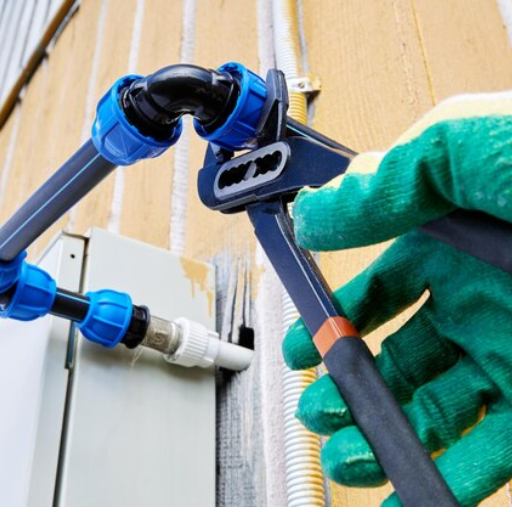
Although new standard requirements are rapidly implemented in the construction and rehabilitation of pipelines, pipe systems containing HDPE remain in regular service, and this is of great concern, as I have partially outlined. These requirements contain detailed line maintenance action plans that optimize line operation and reduce the risk of damage/contamination of the pipeline structure and the inner surface. Visual inspection allows us to define the first signs of surface wear, and physical cleaning of the sediment or debris enables us to maintain the vessels in a healthy state with optimal flow and minimal risk of blockage. When servicing or performing troubleshooting operations, it is recommended to carry out standard practices such as pressure testing and thermal imaging to assess the state of joints and areas of insulation that are not working effectively or are damaged. All these measures aim to create conditions to increase the life of the whole HDPE pipeline system and to enhance its efficiency.
Prolonging the Life of Your Pipeline
It is important to take care of your HDPE pipeline if you wish to extend its lifespan. A strategic plan that aims to maximize performance and endurance is also helpful. Here are some basic actions and parameters to bear in mind:
- Regular Inspections: Examine potential damage to the pipes or any signs of premature deterioration. It would assist in diagnosing problems earlier on avoiding them from getting worse and becoming out of hand.
- Cleaning Protocols: Remove any sediment and residue that might build up in the pipeline. This hinders any obstruction and the movement instead remains uninterrupted. Set a maintenance date in accordance with the nature of the fluids and operating circumstances of the pipelines.
- Pressure Management: Correct pressure should be set in order to ensure less strain is posed on the pipelines. Regular sufficiency indicators can be verified with a gauge and pressure spikes can be dealt with relief valves.
- Stress Reduction: Always take the appropriate measures that offset the mechanical stress along the pipelines and ensure they are supported ensuring no sagging,. It would also suggest maximum pipeline bending to be avoided as also inducing strain.
- Joint Integrity:On regular basis it would be necessary to inspect and service the fusion joints in order to verify they are properly sealed and have maintained their strength. Alterations in temperature and pressure is to be carefully observed as they may compromise the joint strength and repairing should be done when need be.
- Material Compatibility: Only ensure materials be transported in pipes that are made of high density polyethylene only if the materials are certain not to damage the pipes over time. If the pipes are susceptible to corrosion or damage then liners may be used or materials can be altered.
- Environmental Protection: Safeguard the pipelines from deterioration due to climatic factors by applying protective layers or wraps in particular on bare sections or regions with harsh climatic conditions.
Valiantly deploying these measures, you can expand the lifetime of your HDPE-engineered pipeline, making it a dependable and effective element of your infrastructure.
Identifying and Fixing Common Corrosion Issues
Corrosion is a major issue with HDPE context, although it is rarely found with metal piping systems, this will still happen under specific environmental conditions or in the presence of some foreign materials. For that reason, the identification and treatment of corrosion problems constitute an integral part of system integrity and performance. Note:
- Recognizing Causes of Corrosion:
- Chemical Incompatibility: Influenced by certain fluids, the surface of HDPE can be degraded. Material compatibility charts can assist in identifying risks.
- Microbial Induced Corrosion (MIC): Growth of elder microbes such as bacteria results in the formation of biofilms, which causes the breakdown of materials. Use of microbial analysis tests is recommended in this case.
- Detection Techniques:
- Visual Inspection: Inspecting on-site areas for roughness, inadvertent surface cavities, or discoloration regularly.
- Advanced Imaging: Ultrasonic and thermal imaging are used to detect subsurface corrosion that isn’t visible.
- Chemical Analysis: Detection of subsurface corrosion, which is not visible by means of ultrasonic and thermal imaging but lies under the surface.
- Prevention Strategies:
- Use of Protective Coatings: Applying an impermeable layer to guard against chemicals and microbes.
- Cathodic Protection: In environments prone to electrical interference, this method reduces corrosion by diverting electrical currents away from the pipeline.
- Material Upgrades: Transitioning to higher-grade HDPE or alternative polymers when operating conditions are extreme.
- Remedial Actions to Address Corrosion:
- Pipeline Section Replacement: When corrosion is beyond repair, the affected section should be replaced to restore line integrity.
- In-situ Repairs: Utilizing specialized filler compounds that can adhere to HDPE and restore surface continuity.
- Environment Modification: Adjust operation conditions such as temperature, pressure, or material to mitigate ongoing corrosive effects.
Early corrosion detection and preventive interventions guarantee that the structural and operational fitness of HDPE piping systems will remain intact through time with the guarantee of performance and safety.
Best Practices for Water Distribution Systems
When it comes to performance and efficiency, an industry expert knows that the best practices in water distribution systems have to be implemented. Such a practice would start, however, with the assessment of the network – specifically the pressure management so as to prevent pipe bursts and water loss. Such practices may include the utilization of real-time flow and system pressure monitoring for the quick identification of irregularities. Prevent water pollution and ensure that health requirements are adhered to by controlling water quality. Continue with active use of the valves, fittings, and meters so as to ensure high levels of longevity while also enhancing accuracy and precision. Implement the application of energy-saving pumping techniques while coupling such a practice with smart technology to reduce operational expenses and enhance the management of the systems. Water distribution systems can be carried out with an equal level of effectiveness, safety, and reliability due to these practices.
Reference
- A Comprehensive Guide to HDPE Fittings – Edoburg – This article provides an in-depth look at the types of HDPE fittings, their applications, and joining techniques.
- HDPE Fittings – A Complete Guide – This guide covers everything buyers need to know about HDPE fittings, including their benefits and considerations when dealing with suppliers.
- Download HDPE Handbook Chapters – This handbook assists in designing and installing PE piping systems, focusing on protection from corrosion and other damages.
Frequently Asked Questions (FAQs)
Q: What are HDPE water pipe fittings and what are their main uses?
A: HDPE water pipe fittings are components used to connect sections of high-density polyethylene (HDPE) pipe. They are commonly used in water supply, drainage systems, and irrigation due to their durability, flexibility, and resistance to corrosion and chemical damage.
Q: How do I choose the right polyethylene pipe and fittings for my project?
A: Choosing the right polyethylene pipe and fittings involves considering factors such as the diameter of the pipe, pressure requirements, type of connection needed (e.g., coupling or valve), and the specific application, such as potable water or drainage pipe systems.
Q: What is the difference between HDPE fittings and other types like PVC or metal fittings?
A: HDPE fittings offer greater flexibility and resistance to corrosion compared to metal fittings and are more durable under high pressure compared to PVC pipe fittings. They are ideal for applications needing a strong, lightweight, and long-lasting solution.
Q: How are polyethylene pipe fittings manufactured?
A: Polyethylene pipe fittings are manufactured using a process called hdpe injection molding, where high density polyethylene material is heated and injected into molds to form various fitting shapes like hdpe elbow, reducing tees, and end caps.
Q: What are the benefits of using HDPE elbows in a piping system?
A: HDPE elbows are used to change the direction of the pipe system, offering flexibility and ease of installation. They provide excellent resistance to corrosion and chemical exposure, ensuring longevity and reliability in the system.
Q: How do I ensure a proper seal when using HDPE fittings?
A: To ensure a proper seal, make sure the ends of the pipe are clean and free from debris before joining. Use gaskets and appropriate coupling techniques designed for HDPE materials to prevent leaks and ensure a secure connection.
Q: Are there specific fittings for HDPE pipes used in high-pressure systems?
A: Yes, fittings for HDPE pipes in high pressure systems are designed to withstand greater stress and are typically reinforced to maintain integrity under such conditions. Always check the pressure rating of the fittings and the pipe size to ensure compatibility.
Q: Can fabricated HDPE fittings be used to connect HDPE to other materials?
A: Yes, fabricated HDPE fittings can be used to connect HDPE pipes to other materials, such as metal or PVC pipes. These fittings are designed to accommodate different types of connections, ensuring a secure and efficient joint.
Q: What are reducing tees, and how are they utilized in piping systems?
A: Reducing tees are a type of polyethylene pipe fitting that allows for a change in pipe size while branching off into a secondary line. They are used when it’s necessary to connect pipes of different diameters within a system.



